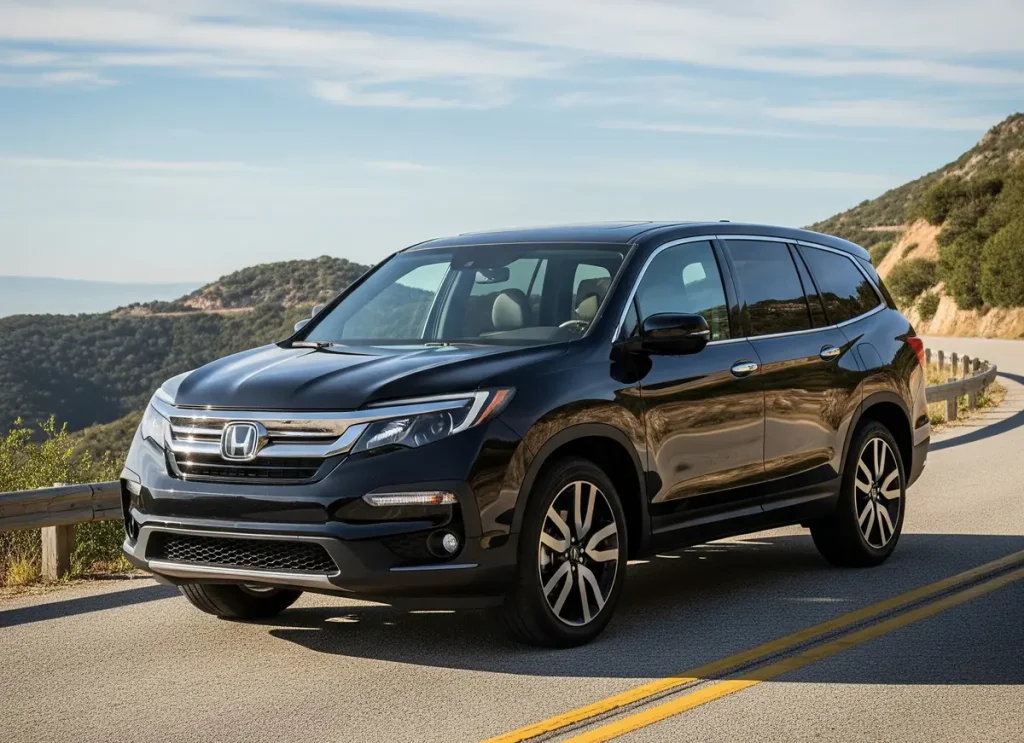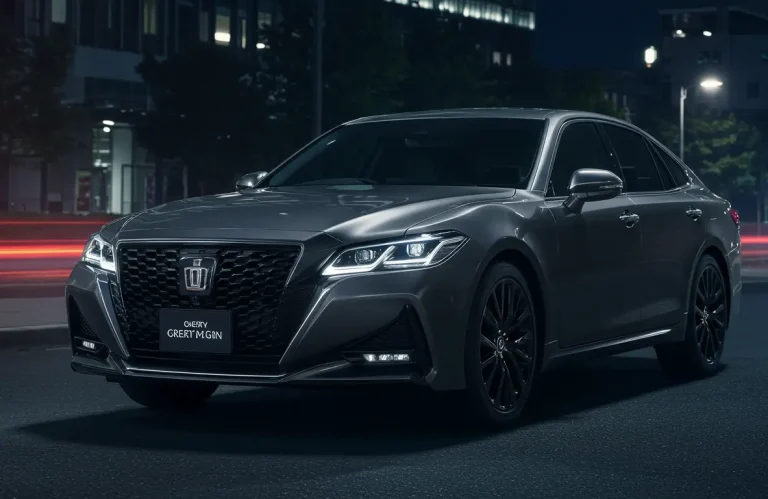Honda Pilot Years to Avoid If You Hate Repairs
Not every Honda Pilot has been a winner. Some model years have caused headaches for owners due to engine problems, transmission failures, and electrical issues. From what I’ve seen over the years, a few specific models stand out for the wrong reasons.
We’ll look at the Honda Pilot years to avoid if you’re thinking about buying a used one.

Why Some Honda Pilots Are Better Than Others?
Honda updates the Pilot every couple of years with newer designs and features. In some instances, these updates work out fine but in others, they introduce new issues. Same way, a new design of an engine or transmission can be poorly tested, which will result in future problems.
Second, there were different years with a greater number of recalls and complaints compared to others. Based on what I have encountered on online forums such as CarComplaints and NHTSA, the same issue on specific models keeps recurring across owners.
But Honda has worked on fixing these issues in future models. So, a Pilot of 2017 could be far superior to that of 2016 since Honda worked on the poor areas. And that is why it is extremely important to know what year Honda Pilot to avoid.
Honda Pilot Years to Avoid
When I first looked into buying a used Honda Pilot, I thought they were all reliable. But after digging through reviews and hearing from real owners, I found that some years are just plain trouble.
2003 Honda Pilot
I discovered that when the first model of Honda Pilot came up it had numerous growing pains. It has a reputation for effective transmission problems, particularly at approximately 100,000 miles. Numerous owners have complained about jerky shifting, slippery gears, and in some cases, total transmission shift.
In addition, there were issues with the torque converter that regularly required rather expensive repair. When you consider purchasing such a model, understand that repair costs are going to be high, or just get one that has already undergone a major replacement of parts.
2005 Honda Pilot
This year had a bad mix of engine and electrical problems. Many drivers complained about engines shutting off without warning, weak alternators, and dashboard lights constantly flickering.
I also read that oil leaks and worn-out motor mounts showed up early in the vehicle’s life. Some owners said their Pilot felt unsafe to drive, especially at higher speeds. Even though the design looked solid on the outside, the inside mechanics didn’t hold up well over time.
2009 Honda Pilot
From what I’ve seen, the 2009 Pilot had more than its share of issues. One of the biggest complaints was premature brake wear. Some people had to replace their brakes multiple times within a year.
Others said the engine was noisy and sluggish, especially when driving uphill or with a full load. There were also concerns about the vehicle’s stability and handling, making it a frustrating choice for families who needed a dependable SUV.
2013 Honda Pilot
This one looks good on paper, but the problems start after a few years. The engine mounts tend to break early, which makes the car vibrate and shake during idle or acceleration. Suspension problems like worn-out bushings and noisy shocks were also common.
I even came across reports of water leaking into the cabin due to faulty seals. If you don’t want to deal with regular mechanic visits, this is definitely a year to skip.
2016 Honda Pilot
The 2016 model was supposed to be a big upgrade with a sleek new design. But I’ve seen many owners complain about transmission hesitation, rough shifting, and warning lights showing up early.
Some had to replace sensors and electronic control units just months after purchase. This year also introduced a push-button gear shifter that confused some drivers and led to mechanical problems. It had promise, but it didn’t deliver the kind of long-term quality most people expect from Honda.
Also Read: Honda Cars Without CVT Transmission
Common Problems in These Years
When I started comparing the bad Honda Pilot years, I noticed the same issues kept coming up. These aren’t just small things—they’re the kind of problems that cost money and ruin your trust in the car. Here’s what you really need to watch out for:
Transmission Failures
One of the worst and most expensive problems was the transmission. In models like 2003 and 2016, drivers reported slipping gears, delayed shifting, and total failure around 100,000 miles. Some had to spend over $3,000 to get it fixed. And the worst part? Many of these failures happened right after the warranty expired.
Engine Mount and Vibration Issues
In years like 2013, engine mounts would wear out quickly. That caused the SUV to shake while driving or idling. Some people thought something was wrong with the tires or suspension at first—but it was the mounts all along. Replacing them isn’t cheap and sometimes the issue comes back even after repairs.
Premature Brake Wear
I read many reviews from 2009 owners who had to replace brakes way too often. Some said they changed the pads and rotors every 10,000–15,000 miles. That’s way below the average lifespan of brakes. It became so common that some owners thought it was just “normal” for Pilots—when it really wasn’t.
Electrical System Problems
Across several years, like 2005 and 2016, electrical issues were a nightmare. People complained about flickering lights, dead batteries, faulty sensors, and warning messages that wouldn’t go away. These problems are hard to trace and often return even after a fix. I’ve seen drivers spend hundreds just diagnosing these issues.
Oil Leaks and High Consumption
The early models especially had a bad habit of leaking oil or burning through it too fast. Some 2005 Pilots would drop oil levels quickly, even when there were no visible leaks. This led to engine damage for those who didn’t check often enough. And let’s be honest—most of us don’t check our oil every week.
Read More: Honda CRV Years to Avoid
Tips Before You Buy a Used Honda Pilot
If you’re thinking about buying a used Honda Pilot, I highly recommend doing a few smart checks first. These tips come from what I’ve learned reading owner reviews, expert advice, and even test-driving a few myself.
Check the VIN for Recalls
Always get the vehicle’s VIN (Vehicle Identification Number) and check it on NHTSA.gov or Honda’s recall site. Some Pilot models had safety-related recalls that dealers will fix for free. It takes just a minute and can save you from buying a car with serious risks.
Get a Full Vehicle History Report
Sites like Carfax or AutoCheck give you the full history—accidents, maintenance records, past owners, and even odometer rollbacks. If the car was in a flood or had major repairs, these reports will show it. I never buy a used car without checking this first.
Ask for Service and Maintenance Records
Try to buy from someone who kept detailed service records. Regular oil changes, brake replacements, and transmission service are good signs. If there’s no paperwork, that usually means the car wasn’t cared for—and that’s a risk you don’t want to take.
Take It for a Long Test Drive
It cannot be a fast pass around the block. I would recommend a few studies on the car at highway speeds, during turns, and when stuck in stop-and-go traffic. Pay attention to noises of rattling, also shaking, and how it changes gears. When something does not seem right, then it is up to you to listen to your intuition.
Have a Mechanic Do a Pre-Purchase Inspection
This step is super important. A mechanic can spot hidden problems with the transmission, suspension, or electronics that you won’t notice during a short drive. It costs around $100–$150, but it’s worth it for peace of mind.
Avoid Problem Years
Find those high-risk years mentioned in this article, such as 2003, 2005, 2009, 2013, 2016, and avoid them. These models have deep mechanical problems even when the car looks fine. So, Use safer years such as 2008, 2010, or the years after 2018 at least.
Conclusion
Not all Honda Pilots are built the same, and knowing which years to avoid can save you a lot of trouble. In my observations, all models concerning the years 2003, 2005, and 2016 are the worst years forthe Honda Pilot.
Don’t get worried, though; there are still usable Pilots around. Just find information, prepare a history report, and enjoy the safer model years. By doing so, you will be able to spend time behind the wheel without incurring any sudden repair costs.
Check Out: Honda Odyssey Firing Order
FAQs
Which Are the Good Honda Pilots?
Yes. There are safer alternatives, such as the 2008, 2014, 2010, and 2018, and newer models. These years were more reliable, and fewer complaints were raised by their owners.
What Is the Best Way to Know Whether a Used Pilot Was Repaired Under Recall?
Enter the VIN at NHTSA.gov or the official recall information at Honda. This will assist you to judge whether the repairs on safety were carried out.
Should I Purchase a Used Honda Pilot and With High-Mileage?
It should be a good model year with all service records. A car with a high mileage count and made during an issue year (let’s say 2003 or 2016) is not your best bet, as the fixes can be costly.






